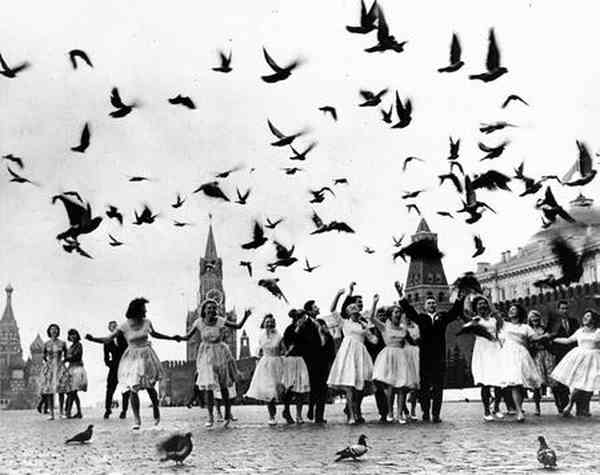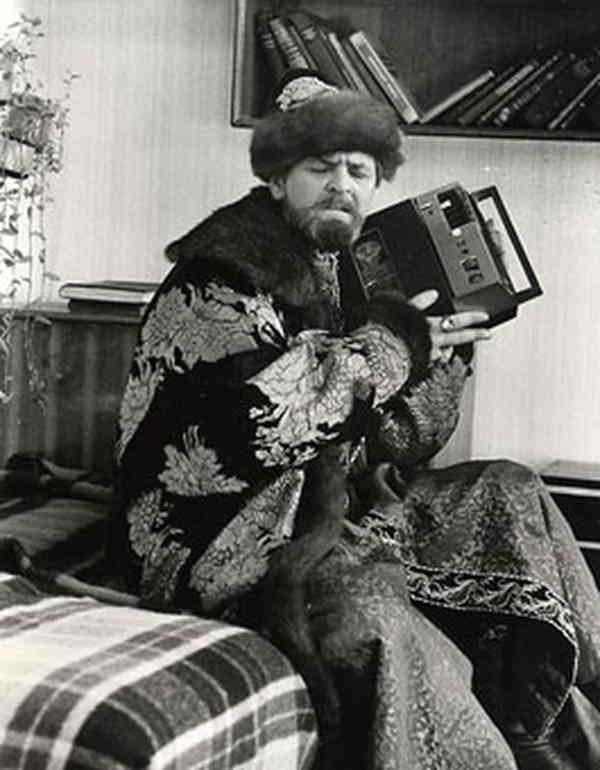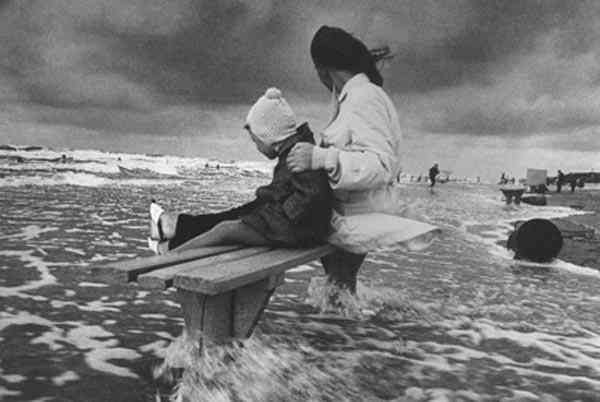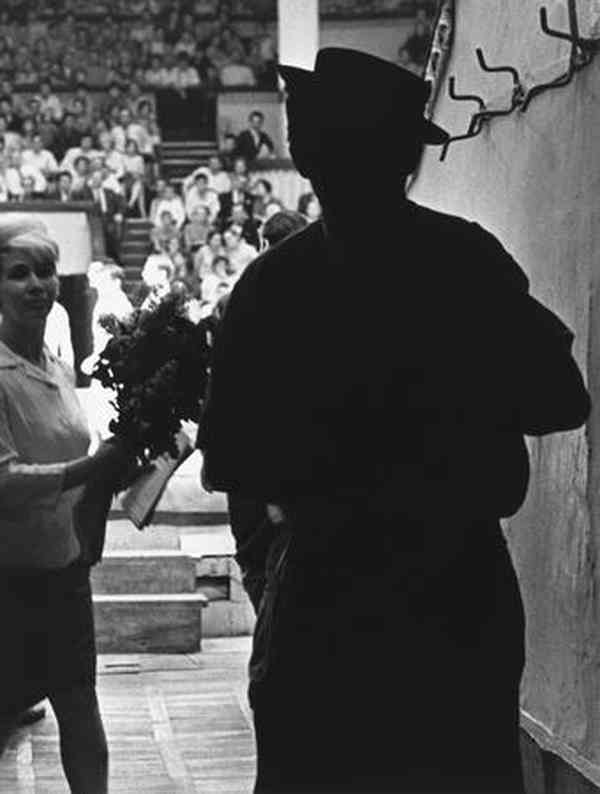- Нас покидают...
- Guide to photo reports from exhibitions
- Икона “Господь Вседержитель”, серебро, эмаль.
- Икона “Господь Вседержитель” , оклад,эмаль.
- ASSESSMENT ON Internet (Information database for 5000 artists)
- Still Life Flowers Eugene Lang
- Автопортрет художника. 1930-е.г. Атрибуция.
- Положение во гроб Иисуса Христа оценка
- Bronze. E.Lancere.
- collages on the theme of the war in Ukraine
Investments in the photograph of the sixties
ARTinvestment.RU 31 января 2011
Thaw 1960 ... The photo that receives a lot of young people, there is a change of generations. Sixties look at the surrounding reality in a new way
In the 1960 picture is experiencing a remarkable recovery. Next to the "old men" who were working before the war, was shot on the front and rear, there are more young photographers, free from the pressure of overt and covert rules, not frigid rigid framework of the previous principles. They are in tune with the time change, free in his work and can afford a rebellion. They are full of strength and hope for renewal in society. And they are willing to move mountains for the sake of new ideas.
In 1957, he again started publishing the magazine "Soviet Photo". On the pages of the magazine issues fotomasterstva, in particular relating to the staging of the time of photography. Many photographers condemned staged photography and spoke in favor of "clean" report. In a photojournalist that was fundamentally.
annually photographers showed their work at exhibitions: "Seven-Year Plan in Action", "Our Youth", "USSR: The country and people in artistic photography. Photography is not only interested in professionals - Company days of thaw, especially young people, with excitement, eager to accept all new, fresh, and on exhibition came enthusiastic people of different professions. This explains the kind of "rebellion" in photography 1960.
What is the difference between generation of the sixties? What are the photos of those years? About people. In place of metal, fire techniques in photography theme comes a man who lived in the Soviet Union. Tune with its time images of the previous decades - often conditional, which prevented a person and emphasizing the class association and the profession of the models - are replaced by shots of everyday life, where people do not deliberately static, but look quick and easy, pictures of children - ordinary boys and girls, and not the future builders of communism. If on the frames 1930 people marching in columns of the monolith, in 1960 the authors try to show a person's character, his changeable mood, daily during the life.
concept of "photographers of the sixties" conditionally, usually referred to them masters who worked in the late 1950's - early 1980's. We have to admit that the Soviet photographers were denied familiarity with western photography, do not share their experiences with foreign colleagues, have not participated in international exhibitions. Soviet photography as art in general, developed independently, in isolation, confined space. Some see this as a drawback. Others, conversely, believe that this unique focus of Russian photography, and is its advantage. Russian photographers opened new frontiers and without outside influence folded his idea of documentary and fiction, reportage and staged photography.
Below we will outline the terms of the first names, we select the major innovators in photography of the sixties, as well as try to provide a basic understanding of what is worth paying attention to novice collectors and investors.
Outstanding Photographer Naum Granovsky (1910-1984) whole life working photojournalist by courtesy of TASS, during the war was a photographer for the newspaper" Alarm ". Subjects of his photos - Moscow and the city's architecture: historic buildings, squares and streets of the capital-thirties, then the fifties and sixties of the last century. According to statistics from auction sales base ARTinvestment.RU, the average price of vintage (removed by the author and printed at one time) photographs Granovsky 1930-50's of 1500-5000 pounds. In 2008, Bonhams auction in London this photo Granovsky Tchaikovsky, Moscow (1954) went for 3,360 pounds.
In the early 1960's to photograph it many fans. One of them was Valery Gendo-Rothe (1926-2000). He was fond of photography since childhood, vocational education began with lectures on the photo at the Central House of Journalists in 1956. Gendo-Rothe worked as an editor in the magazine "Soviet Photo" (1957), then a photographer foreign edition by courtesy of TASS (1959-1968). He was a fierce proponent of the method of reportage photography, strongly opposed and condemned the staging of photographers, diverting production of events leading role. In his autobiography ("Fotobiografiya, 1978) Gendo-Rothe wrote:" A rare director of the theater or a movie spend so much human labor to organize for the camera "is a piece of life, duration 1 /250 second. A man of rare charm, always located to communicate, he appreciated the sincere profession of human feelings and emotions, so people in his photographs are natural and at ease. At the auctions of Gendo-Rothe has not yet appeared, but their investment potential is realized through the sale of gallery.
| Source: |
a true master of political reportage was Vasiliy Egorov (1914-2007). From 1939 to 1996 he worked in the Egorov Photo Tass (Itar-Tass) visited all the republics of the Soviet Union and traveled to many countries. Photographers political genre requires a special skill, in time to see and appreciate the story and make a good shot, and of course, professional success, to use often the only chance for a good shot. Reshoot, change the track - do not. In the photo Kosygin in a headdress chief Indian tribe may be noted observation and good sense of humor photographer. Politically, photo essay, many pictures are not held in print (including a photo Kosygin) and were accompanied by marked "NDP" which meant "not for publication". Only several years later we can see the photos of those years in full. According to the database ARTinvestment.RU, pictures Yegorova has appeared on various auctions with the estimate of 150 to 1000 euros. With a maximum result of 220 euros was sold to a snapshot of Fidel Castro in Ukraine "at the auction« Lots Road Auctions »in London in 2010.
 VLADIMIR LAGRANGE Doves of Peace. 1962 VLADIMIR LAGRANGE Doves of Peace. 1962 Source: |
Photographer thaw Vladimir Lagrange (born 1939) worked in the genre of economic, social and political photo essay. LAGRANGE shows us Soviet life from all sides, without embellishment. He has over 20 years (1963-1989) worked as a photographer in the magazine "Soviet Union". In 1962 the exhibition "Our youth in Budapest Lagrange was awarded a gold medal for his photo" Doves of Peace ". The images show the graduates of schools in Moscow on Red Square with soaring doves. Reign of freedom, happiness and fun. Pigeons as a symbol of peace, and youth like a bird on takeoff. In the 1960's was precisely such sentiments: a sense of freedom and joy of life. An interesting feature of this frame photo critics remarked Michael Sidlin: girls and boys above the Kremlin walls. Previously, it was unthinkable.
 IGOR Gnevashev Roll era. 1973 IGOR Gnevashev Roll era. 1973 Source: |
Photographer Igor Gnevashevu (genus . 1936) fame brought a photo reports from film sets. Since 1966 Gnevashev worked in the magazine "Soviet Screen" from 1973 - in the journal "Soviet film." He has collaborated with many directors of national cinema: P. Todorovsky, L. Gaidai, Eldar Ryazanov, S. Bondarchuk, A. Tarkovsky, N. Mikhalkov and others. Photo during the filming of motion pictures - an independent theme. Photographs of individual scenes can be used in service provider or director's purpose. The photographer can help the director to look differently at the film. For example, on a photograph of Igor Gnevasheva "Roll call of the times" actor Yuri Yakovlev poses for the cover of "Soviet Screen". Leonid Gaidai so pleased with the scene "Ivan the Terrible listening to Vysotsky" that he immediately decided to turn it into a movie, and right on set up a new episode. Thus, the resourcefulness and skill of the photographer suggested the director unexpected move.
| Source: |
the lens Yuri Abramochkin ( genus. 1936) caught the leaders of many countries. Since 1961 he works in the APS. Abramochkin could always catch the right moment to show the character of man, so he liked to take pictures of the protocol after posing as humans behave naturally. Photos Lagrange Gnevasheva, Abramochkin not yet participated in the auctions, but they are sold in Moscow galleries.
 Antanas Sutkus in the Baltic Sea. 1970 Antanas Sutkus in the Baltic Sea. 1970 Source: |
special phenomenon of Soviet photography 1960 - Lithuanian school. Kaunas photoclub collected a lot of amateurs and professionals. With this in Lithuania there was a special school of photography. Antanas Sutkus , Alexander Macijauskas, Algimantas Kunchus - is an incomplete list of the representatives of the Lithuanian school, whose works have become known not only in the USSR but also abroad. Lithuanian photo shows country life, scenes from daily life of Lithuanians without pathos of socialist realism. The lyrical mood is very typical for the Lithuanian school. This can be called a special artistic language, which distinguishes them from other Soviet photographers. The database ARTinvestment.RU the photographer Antanas Sutkus 24 auction transactions. If in 2009 the auctions work Sutkus sold in the range of 500-1700 euro, next year - from 700 to 2700 euros. The maximum sales were recorded in the Sotheby's auction in London in 2009: 3500 pounds for the lot, including 4 pictures with scenes from the life of Vilnius.
 VICTOR AHLOMOV Yuri Nikulin. 1963 VICTOR AHLOMOV Yuri Nikulin. 1963 Source: | Duel Series Moscow University. 1963 Source: |
During the thaw there are many talented photographers such as Victor Ahlomov, Vsevolod Tarasevich, Ptitsyn, Alexander, Nicholas Rakhmanov, Andrey Knyazev, Vladimir Bogdanov, and many others. Ahlomov (b. 1938) worked as a reporter in Izvestia .. Tarasevich (1919-1998) was a military photographer, after the war worked with the magazine "Soviet Union" and "Spark." In 1963, Tarasevich was winner of the World Press Photo for photo "Duel" Series: "University of Moscow." Photos Ahlomova and Tarasevich at auctions so far not been exhibited, and in the galleries of their work to find a no-brainer. But these authors - legends pictures sixtieth.
Summarizing, we can say that in the 1960's photographers are most worried about the search for new forms of expression, dynamics and construction of the frame. With the help of photographs of the sixties, we can see the mood of joy and caring people of that era and make a complete portrait of a man who lived in the Soviet Union. From an investment point of view of the potential of photographs of the sixties has not yet disclosed. Russian photography market has not been formed and is in its infancy. So that the collectors have a good chance to be relatively inexpensive to build a thematic collection of images of the sixties (eg, celebrities of the Soviet Union, the sport in the USSR, Soviet childhood, etc.). At auction photos of the sixties can be found in the range of 500-5000 euros. Gallery-level prices are generally slightly lower, depending on when the printed image: modern negativity copyrights prints (vintage) are less common, they are more valuable and, of course, expensive and often later executed by the author himself is no longer prints from old negatives. In Moscow galleries collectors can buy both vintage photographs and contemporary prints from negatives Copyright Lagrange Gendo-Rothe, Egorova, Gnevasheva, Granovsky and Abramochkin ranging from 20 to 80 thousand rubles.
Marina Bondarenko, AI
about other areas of investment in the photograph is here:
Creative Group Direct Photography» .
Investment in the Russian conceptual photography .
Photography as an investment .
https://artinvestment.ru/en/invest/ideas/20110131__photo.html
https://artinvestment.ru/invest/ideas/20110131__photo.html
When quoting reference to the https://artinvestment.ru without fail
Attention! All materials of the site and database of auction results ARTinvestment.RU, including illustrated reference information about the works sold at auctions, are intended for use exclusively for informational, scientific, educational and cultural purposes in accordance with Art. 1274 of the Civil Code. Use for commercial purposes or in violation of the rules established by the Civil Code of the Russian Federation is not allowed. ARTinvestment.RU is not responsible for the content of materials submitted by third parties. In case of violation of the rights of third parties, the site administration reserves the right to remove them from the site and from the database on the basis of an application from an authorized body.
- 16.08.2022 Расследование ФБР подрывает репутацию Художественного музея Орландо Отменены три выставки, из собрания отозваны отдельные работы
- 14.08.2020 Face mask for $1.5 million In this sum cost the unnamed "billionaire from Shanghai" ordering a mask of gold and diamonds from the jewelry company Yvel
- 14.08.2020 A special contract for buyers of art of authors of African descent For fight against speculators, Christie's has developed a list of conditions of purchase
- 13.08.2020 Cultural institution in the U.S. last year spent $7.9 billion This year a repeat result is not obtained – loss of art-индустрии the United States already amounted to $150 billion And this is not the final figure
- 13.08.2020 Biography Yayoi Kusama will be released as a graphic novel With the history of one of the most successful contemporary artists in the form of a comic book will be available from 15 September 2020
- 03.08.2018 Торги «Антиквариума» 28 июля. Краткие итоги Наторговали на 3,6 миллиона рублей — 131 % от эстимейта. Одним из топ-лотов стала работа Владимира Немухина, проданная за 240 тысяч
- 25.07.2018 Очередной аукцион #всёпорублю в «Литфонде» принес почти 4,5 млн.руб. Топ-лотом стала икона «Богоматерь Владимирская» — 600 тыс. руб.
- 24.07.2018 «Русская Эмаль» торжественно закрывает сезон и уходит в отпуск На завершающих торгах 14 июля «Русская эмаль» порадовала участников Кандинским, целой коллекцией нэцкэ и произведениями Пыжовой
- 16.07.2018 Краткие итоги сороковых живописных торгов «Кабинета» Аукционный дом «Кабинет» проводит последние торги сезона и уходит в отпуск до осени, вслед за своими игроками
- 03.07.2018 Коротко о главном: итоги аукциона 28 июня в «Литфонде» Рейтинг возглавляют классики русской литературы, а сказочники продолжают удивлять
- 12.08.2020 Literature: Piroska Dossey. Sold! The book is about the phenomenon of pricing, the original title of which was ahead of its time in a decade
- 07.08.2020 Movies: "the Cool school" The emergence of abstract expressionism on the West coast of the United States the voice of the Big Lebowski
- 06.08.2020 Cross-trades in the summer of 2020. ArtTactic Report Analysis of auction sales of a new format with the participation of the old masters
- 04.08.2020 Opened 27-й auction "twenty-first century. Contemporary Russian art" The catalogue contains artworks of Seeds Agroskin, Alexei Vaulin, Dima Goryachkin, Dasha Delone, Anna Laurel, Denis Mikhailov, Andrei Munz, Arman Sirunian, Kathy-Анны Taguchi and Tatiana Yang
- 31.07.2020 10 most unusual ArtTech-стартапов 2020. Part 1 AI talks about young companies whose ideas have become especially popular with the onset of the quarantine
- 07.03.2023 Неизвестный известный Серж Иванов (1893–1983) История происхождения ранних картин С.П.Иванова
- 17.06.2022 Выставка Люси Вороновой в галерее Atelier CHOUTKO На выставке будут представлены живописные произведения Вороновой разных лет и состоится премьера ковра ручной работы, созданного художницей совместно с Atelier CHOUTKO
- 14.03.2022 Эрмитаж потребовал досрочно вернуть работы, участвующие в итальянских выставках В Россию в ближайшее время вернутся около 25 картин
- 30.07.2020 In Saint-Петербурге opened the exhibition "Artists and collectors — to the Russian Museum. Gifts. 1898-2019. Favorites" The exhibition, held simultaneously on all the main belt, has collected more than 1,500 items donated to the Museum since the founding of the
- 27.07.2020 Fedor Rokotov exhibition opens at Historical Museum of Moscow A collection of works of the famous Russian portrait painter XVIII veka will showcase on 29 July 2020
Top 37
- 1. Mark Rothko$86,83 million
- 2. Kazimir Malevich$85,81 million
- 3. Wassily Kandinsky$41,6 million
- 4. Marc Chagall$28,45 million
- 5. Chaim Soutine$28,16 million
- 6. Nicolas Staël$22,25 million
- 7. Alexei Jawlensky$18,59 million
- 8. Valentin Serov$14,51 million
- 9. Tamara de Lempicka$13,36 million
- 10. Nicholas Roerich$12,13 million
- 11. Kuzma Petrov-Vodkin$11,76 million
- 12. Natalia Goncharova$10,88 million
- 13. Nicolai Fechin$10,84 million
- 14. Ilya Repin$7,43 million
- 15. Konstantin Somov$7,33 million
- 16. Ilya Mashkov$7,25 million
- 17. Boris Kustodiev$7,07 million
- 18. Vasily Polenov$6,34 million
- 19. Yuri Annenkov$6,27 million
- 20. Ivan Klyun$6,26 million
- 21. Vasily Vereshchagin$6,15 million
- 22. Zinaida Serebriakova$5,85 million
- 23. Ilya Kabakov$5,83 million
- 24. Alexander Yakovlev$5,56 million
- 25. Konstantin Makovsky$5,47 million
- 26. Wladimir Baranoff-Rossine$5,37 million
- 27. Ivan Aivazovsky$5,34 million
- 28. Vladimir Borovikovsky$5,02 million
- 29. Alexander Rodchenko$4,5 million
- 30. Mikhail Larionov$4,46 million
- 31. Sonia Delaunay$4,34 million
- 32. Mikhail Nesterov$4,30 million
- 33. Vera Rockline$4,04 million
- 34. Mikhail Klodt$4,02 million
- 35. Pavel Kuznetsov$3,97 million
- 36. Alexandr Deineka$3,82 million
- 37. Boris Grigoriev$3,72 million
- Нас покидают...
- Guide to photo reports from exhibitions
- Икона “Господь Вседержитель”, серебро, эмаль.
- Икона “Господь Вседержитель” , оклад,эмаль.
- ASSESSMENT ON Internet (Information database for 5000 artists)
- Still Life Flowers Eugene Lang
- Автопортрет художника. 1930-е.г. Атрибуция.
- Положение во гроб Иисуса Христа оценка
- Bronze. E.Lancere.
- collages on the theme of the war in Ukraine

